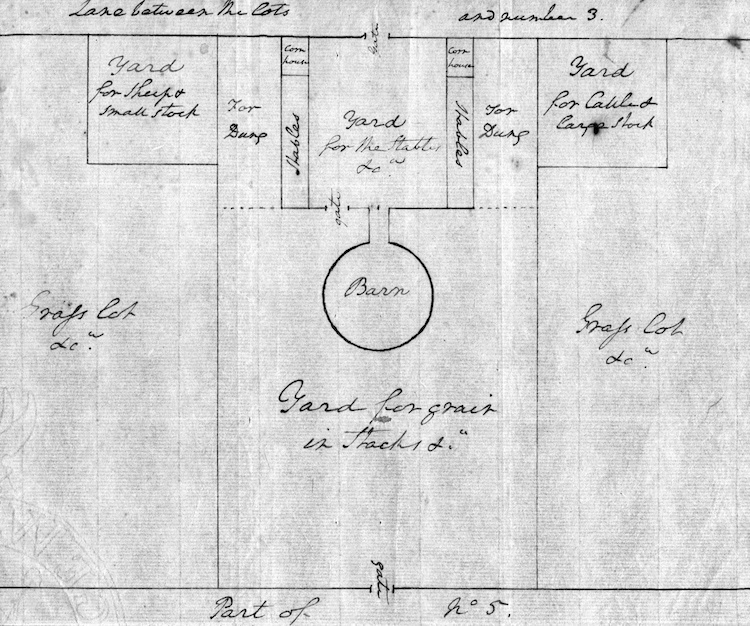From George Washington to William Pearce, 10 May 1795
To William Pearce
Philadelphia 10th May 1795.
Mr Pearce,
Your letter of the 3d instt, with the Reports of the preeceding week, was received yesterday;1 and I am glad to find by it that the Wheat & grass continues to mend—I hope the warm days we have had, and the showers of rain (if they have extended to you) have also brought on the Oats. It is high time they were advancing, if much is to be expected from them.
Considering the quality of my flour this year, and the smalness of the quantity, I am very well satisfied that you have got it off your hands at the prices it sold; altho’ flour at this market is at 12 dollars a barrel & rising. In short, the scarcity of this article in Europe, & demand for it; added to the failu⟨re⟩ of the last wheat crop in this Countr⟨y wi⟩ll enable the holders to get any pric⟨e they⟩ please. Let me know the quantity o⟨f Mid⟩lings & Ship-stuff you disposed of. ⟨And⟩ tell Davenport to make out, and ⟨to hav⟩e sent to me, the Mill acct for last ye⟨ar,⟩ that I may see what wheat has gone into; and what flour has come out of, the Mill. I have no reason to suspect that Davenport is otherwise than an honest man; but regular & fair accts should be stated, & rendered by all Men. In doing this with him, the Overseers accts of the Wheat sent to, & his of what is received in the Mill, should agree; so likewise ought his charges of the flour, Bran &ca sent to Mansion house, the Overseers, &ca to agree with what is reported & credited. This being done, & added to the different kinds of flour that are sold, & the shorts & Bran used, will (accounting also for the Toll wheat) shew the state of the Manufacturing business—which is not only satisfactory, but absolutely necessary; for I strongly suspect, notwithstanding it would appear by the experimts which have been made of an hundred bushels that the balance is in favor of flour, that the case is otherwise u⟨po⟩n the aggregate quantity which is ground. ⟨That⟩ it is so this year, can admit of no doubt; i⟨t wou⟩ld be inconceivable otherwise that the ⟨mutilated o⟩f my last years crop of wheat, and ⟨mutilated⟩ that of the year before, should yield on⟨ly ba⟩rrls of flour, besides what was cons⟨um⟩ed in the family.
If the boy at the Mill is to go into the Garden, at Mansion house; the sooner it happens the better; and I really (considering the little work my Mill does) see no reason why he should not. I am sorry to find by your last reports that there has been two deaths in the family since I left Mount Vernon; & one of them a young fellow. I hope every necessary care & attention was afforded him. I expect little of this from McKoy, or indeed from most of his class; for they seem to consider a negro much in the same light as they do the brute beasts, on the farms; and oftentimes treat them as inhumanly.
If I recollect rightly, it appears in some of the weekly reports, that Posts & rails were getting at Dogue run to inclose the Barn yard at that place. I forgot when I was at home, and on the spot with you, to fix on the m⟨an⟩ner of doing it. I once pointed out my ⟨plan⟩s to Green & Davis, and I think to M⟨cKoy,⟩ but little attention seems to have be⟨en pai⟩d to these things afterwards by either ⟨of them.⟩ To the best of my recollection, it wa⟨s inten⟩ded to run, from each end of the sheds, ⟨a Po⟩st & rail to the railing leading into the Barn, or treading floor of it, for the stable yard; on one side of which to have a gate, through which to pass into the yard which incloses the Barn on the other sides & into No. 5 also; then back of the two sheds at sufficient distances therefrom allowing full room to receive the litter, dung, &ca from the Stables, to run Post & Rail fences from the lane South of the Barn, to the fence of No. 5, which is back of the lots. Fences run straight, in the manner here described, and at sufficient distances from the back parts of the sheds or stables, would afford ample room for the grain in stacks; and I believe it would be sufficiently capacious also for cow yards, but it would have a bad exposure & besides, is in low ground; therefore a yard, or yards for this purpose (cattle & Sheep) might adjoin (one on each side the Stable yard) the Lane between No. 3 and the lots—& the Stable yard fences; as will appear more distinctly in the sketch enclosed.2
The number o⟨f⟩ Bricks which will be required for the Barn i⟨n th⟩e Neck (River farm), will fall very little sh⟨ort of⟩ 140,000 of those that are sound & good as you will see by the calculatio⟨n here⟩with.3 And that no other than hard ⟨mutilated⟩ bricks may be put into the Walls, le⟨tting it⟩ as soon as it is burnt, & cool, be imme⟨diate⟩ly taken down & the [incomplete]
AL (incomplete), ViMtvL. Where the AL is mutilated, the suggested rendering of the text has been supplied from 34:191–94.
1. Pearce’s letter of 3 May and the reports have not been found.
2. See Figure 2.
3. GW enclosed the following calculation of bricks for the proposed barn at River farm:
(AD, ViMtvL; AD [letterpress copy], DLC:GW).

Fig. 2. GW’s plan for a barnyard at Dogue Run farm. (Courtesy of Mount Vernon Ladies’ Association)

![University of Virginia Press [link will open in a new window] University of Virginia Press](/lib/media/rotunda-white-on-blue.png)

